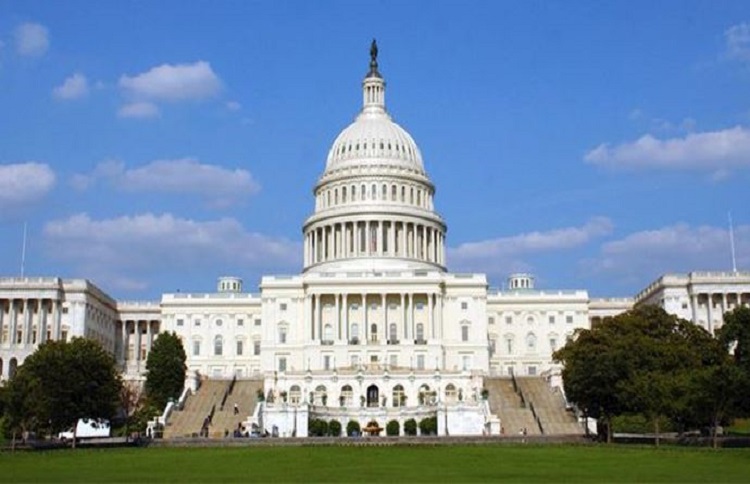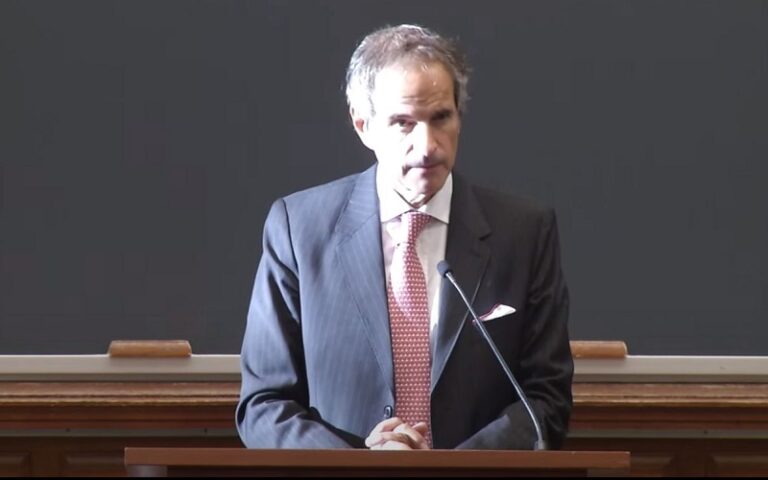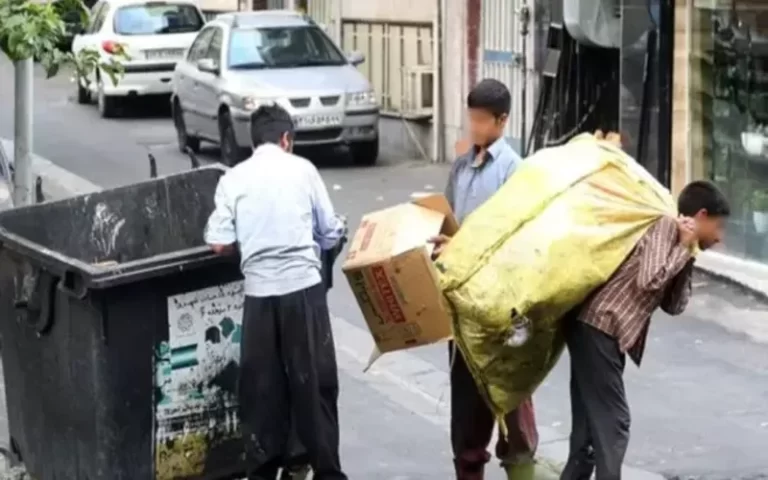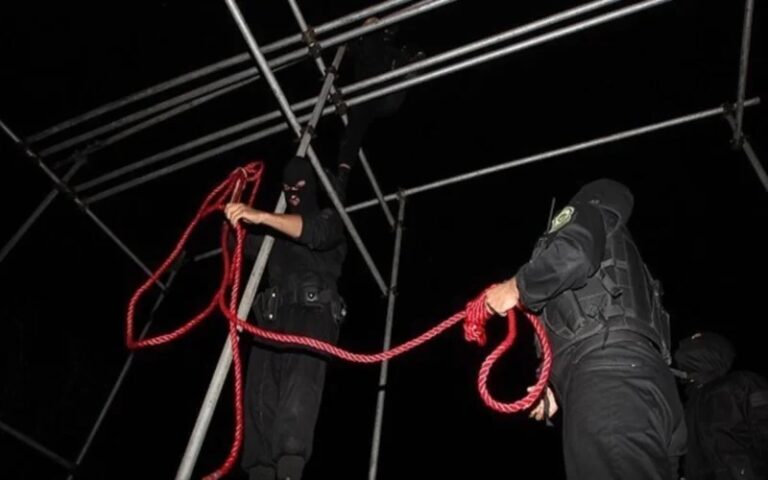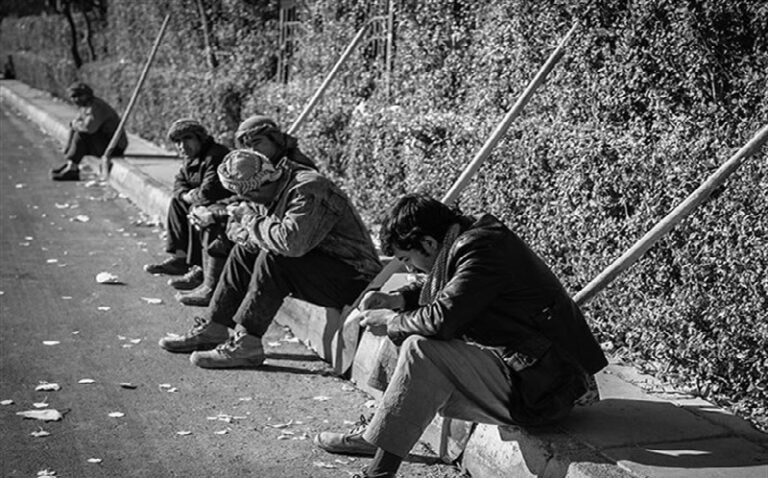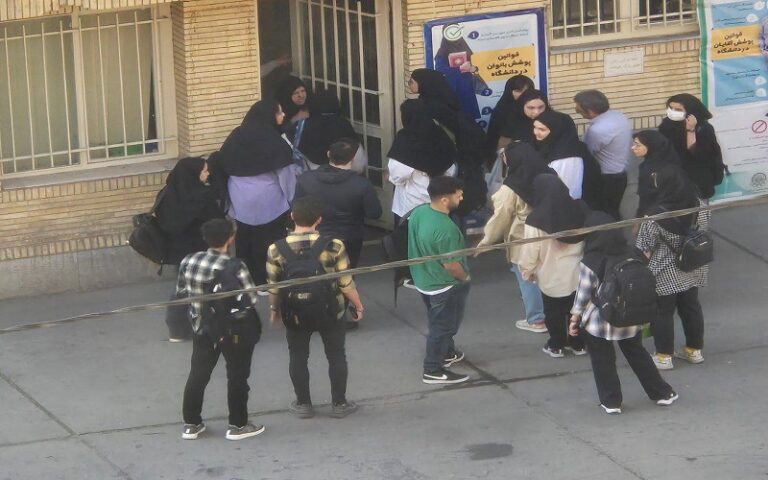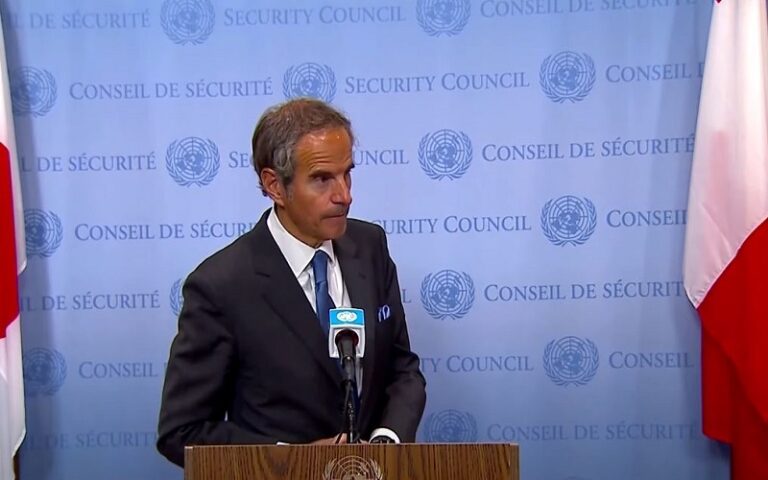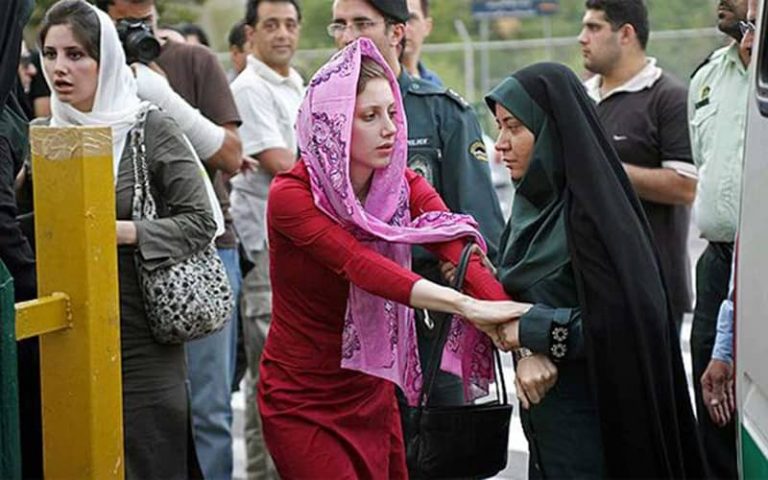LATEST ARTICLES
Iran’s Regime Sentences Singer Toomaj Salehi to Death
Amir Reisian, Toomaj Salehi’s lawyer, says the so-called “Revolutionary Court” in an “unprecedented” move has sentenced this dissident singer “to the death penalty on charges of corruption on earth, the harshest punishment.”
Amir Reisian stated on Wednesday, April 24, in an interview with Shargh Network that the death sentence for his client was issued for charges brought against him in the 2022 case.
“But the stranger thing here is that the preliminary court, in addition to the death penalty, has also considered a supplementary sentence and has sentenced Toomaj Salehi to two years of travel ban, two bans on artistic activities, and participation in behavioral management and skill classes at the Isfahan Knowledge and Justice Court. This court has also declared the suspended sentence for Toomaj Salehi to be enforceable”, Reisian added.
Reisian denied reports of “pardon” or “sentence reduction” for him, stating that “we will definitely object to the issued sentence for Toomaj Salehi.”
In mid-March, a session was held in Isfahan Criminal Court to hear the 2023 case of Toomaj Salehi on charges of “inciting violent acts through computer systems” and “spreading falsehoods through computers.”
In July 2023, it was announced that the Isfahan Revolutionary Court had sentenced Toomaj Salehi to six years and three months in prison for the charge of corruption on earth in the case filed in 2022.
The Supreme Court revoked the previous sentence issued for Toomaj Salehi, but his lawyer announced last year that even after the revoking of this sentence in the Supreme Court and the necessity of removing two of his charges, the Revolutionary Court referred the case back to the Isfahan Prosecutor’s Office.
Reisian also announced in February that two new charges had been added to his client’s “previous indictment,” and this protesting singer had faced charges of “sedition,” meaning armed uprising and group against the system, as well as “conspiracy and collusion to commit crimes against security” in the 2022 case.
In response to the issuance of the death sentence for Toomaj Salehi, Ye-One Rhie, a member of the German Parliament and Salehi’s political sponsor, stated that he was “shocked and angry” to hear this news.
In a video message, he said that issuing a death sentence for this singer is not even logical according to “Iran’s procedures,” and added: “How is it possible that the accusations for which Toomaj received six years of imprisonment last year have become so great that he receives such a heavy sentence.”
Toomaj Salehi, a rap singer, was released on bail on November 18, 2023, “after enduring 252 days of solitary confinement and a total of one year and 21 days of imprisonment,” but only 12 days later, after releasing a video describing his torture in prison, he was detained again with “forceful arrest.”
This singer supported the protesters for a long time during the 2022 protests, and for this reason, he was detained by security forces and then tried in the Revolutionary Court.
“The Iranian regime’s judiciary has orchestrated a farcical and vulgar scenario by playing with the criminal execution verdict for the Iranian artist and political prisoner Toomaj Salehi. This verdict is wholly unwarranted, even within the framework of the regime’s own laws. It serves as a crude attempt to divert public attention from the McCaul Act and the six accompanying bills, which represent a significant step against the regime of execution and massacre. It is evident that the regime is using this scenario not only to threaten the life of Toomaj but also to overshadow a recent surge in executions, which includes 19 executions carried out on Sunday and Wednesday of this week alone. Over the last two weeks, there have been 39 announced executions,” said PMOI Spokesperson on the criminal execution verdict for Iranian artist and political prisoner Toomaj Salehi.
Iran Faces Severe Medicine Shortage and Lack of Government Funding
The Health and Treatment Commission of Iranian regime’s Majlis (parliament) recently released a report highlighting the dire situation of medicine availability in the country. According to the report presented on April 23, nearly 150 essential drugs are facing shortages and severe limitations, with approximately 65 of them experiencing acute scarcity.
The commission urged for legal action to address its findings, but members of the regime’s Majlis opposed referring the matter to the judiciary, with the majority preferring to keep it within the legislative branch.
Another aspect of the report addresses the failure of the Organization of Planning and Budget to reconcile the preferential exchange rate (42,000 rials) with the NIMA system rate (the currency allocated for managing and promoting the country’s imports and exports) over the past two years, resulting in a staggering debt of 840 trillion rials (approximately $1.3125 billion) to the Central Bank. Currently, the exchange rate for the dollar in Iranian markets stands at 640,000 rials.
Furthermore, the report states, “The Central Bank, under the pretext of effective cooperation in allocating foreign currency and providing the necessary liquidity for the pharmaceutical industry through facilities, has avoided such cooperation.”
Nevertheless, with 67 votes in favor, 137 against, and 8 abstentions out of 225 representatives present, the regime’s parliament rejected the application of Article 234 (referring government violations to the judiciary).
Over the past two years, numerous reports have highlighted the challenges in securing foreign currency for importing raw materials for medicine production or medicine itself. On April 22, a member of the Tehran Chamber of Commerce stated that economic actors have been awaiting currency allocations for over five months, but the Central Bank has not provided them.
The Central Bank’s refusal to provide foreign currency for importing medicine comes at a time when, despite promises from the regime’s President Ebrahim Raisi to halt borrowing from the Central Bank, official statistics show that the government’s debt to this institution increased by approximately 27% in 2022 and surged again by 56% in 2023.
Kaveh Zargaran, a member of the Tehran Chamber of Commerce’s representatives, stated on Monday, April 22, that economic actors have been waiting for currency allocations for over five months, yet the Central Bank has not granted them.”
The Iranian regime has often attributed the country’s medicine crisis to U.S. sanctions, claiming that the sanctions target “ordinary people.” However, imports of humanitarian items, including medicine, are exempt from sanctions.
Trading and smuggling pharmaceutical and medical items remain highly profitable, with regime-linked entities selling drugs at exorbitant prices in the free market while medicines are scarce in pharmacies, leaving people struggling to access essential medication.
U.S. House of Representatives and Senate Approve Measures Targeting Iran’s Regime
In a resolute move showcasing bipartisan unity towards addressing the Iranian regime’s actions, the United States House of Representatives has endorsed the “21st Century Peace Through Strength Act,” spearheaded by Chairman Michael McCaul of the Foreign Affairs Committee. The bill, endorsed with a commanding majority of 361 votes in favor and 57 against, was subsequently passed in the Senate with a vote of 80 to 19.
The “21st Century Peace Through Strength Act” encompasses 15 sections, with a particular focus on countering the malign activities of the Iranian regime. If ratified by the Senate and endorsed by the U.S. President, this legislation will impose legally binding measures aimed at constraining the Iranian regime’s behavior.
-
Stop Harboring Iranian Petroleum Act (SHIP Act):
-
Fight and Combat Rampant Iranian Missile Exports Act (Fight CRIME Act):
-
Mahsa Amini Human Rights and Security Accountability Act (MAHSA Act):
-
No Technology for Terror Act:
-
Hold Iranian Leaders Accountable Act:
-
Iran-China Energy Sanctions Act Of 2023:
Grossi: Iran Weeks Away from Having Enough Enriched Uranium for Atomic Bomb
Rafael Grossi, the Director General of the International Atomic Energy Agency (IAEA), has stated that Iran is just weeks rather than months away from possessing enough enriched uranium to produce a nuclear bomb.
According to Grossi, while uranium enrichment at levels close to weapons-grade is concerning, it does not directly imply that Iran currently possesses nuclear weapons.
In an interview with Deutsche Welle published on Tuesday, April 23, Grossi stated that a “functional nuclear warhead requires many other things independently from the production of the fissile material”.
The IAEA Director General referred to Iran’s actions as fueling these speculations and stated that the agency does not have satisfactory access to monitor Tehran’s nuclear program, leading to increased speculation about Tehran’s program.
Grossi has repeatedly warned Iranian counterparts about sensitivities arising from the agency’s lack of access to Tehran’s activities.
“I have been telling my Iranian counterparts time and again […] this activity raises eyebrows and compounded with the fact that we are not getting the necessary degree of access and visibility that I believe should be necessary,” he said.
Referring to the discovery of enriched uranium materials in unrelated locations, Grossi said that this issue has also intensified doubts about Tehran’s transparency.
Grossi, noting that he will soon travel to Iran for a new round of talks, stated that his message to Iranians is that they should cooperate more with the agency.
There have been many speculations about whether Iran’s nuclear facilities are one of Israel’s military targets, and even Grossi recently stated, referring to Israel’s targeting of Iraq’s nuclear facilities in 1981, that the agency does not want to repeat the Iraq experience and if Iran continues to resist transparency and inspection, the IAEA might reach a point where it will refrain from providing credible assurance that it is absolutely certain Iran’s nuclear activities are entirely peaceful.
In the past two years, 8 million people added to Iran’s poor population
According to information analyzed by the state-run Etemad newspaper regarding poverty rate data, a 10% increase in the poverty rate over two years translates to approximately 8 million more people falling into poverty in the country.
Etemad notes the likelihood of middle-class families falling below the poverty line has increased, and the capacity to finance budget resources has decreased among the middle-class population.
In its Tuesday edition, Etemad, in an article titled “Budget 2024: Incapable of Obliterating Poverty,” citing analysis from the regime’s Majlis (Parliament) Research Center on the budget’s capabilities to combat poverty, states that approximately 50% more people have been added to the poverty population since 2017.
Referring to the calculations of the Parliament Research Center, which estimated the absolute poverty line per capita in 2022 to be around 25.610 million rials (approximately $40), Etemad writes that based on inflation data from the past year, the estimated per capita poverty line for the first quarter of 2024 is around 37.40 million rials (approximately $58). The poverty line for a three-member household was estimated at around 56.34 million rials (approximately $87.5) for 2022 and 82.32 million rials (approximately $128) for 2023.
Etemad points out that middle-class individuals have had an average income of about 1.6 times the poverty line since 2018 and have approached the poverty line. It emphasizes the increasing likelihood of non-poor individuals falling below the poverty line, reducing the capacity to finance budget resources among the non-poor population.
In March 2024, the regime’s Eghtesad 24 website reported on the poverty situation in Iranian society, stating, “Almost one out of every three Iranians is below the poverty line, and when 30% of the population is below the poverty line, by March 21 (the beginning of the Iranian new year), this figure reaches 37 to 40 percent, because of high inflation and fixed wages.”
Etemad’s report, referring to the decreasing efficiency of government budgets to combat poverty, stated that what emerges from the image of poverty among Iranians in the 2010s is a decrease in the general welfare of society.
Etemad describes the established taxes in the country as undesirable and writes that the imposition of an undesirable tax can exacerbate poverty and increase the population of poor people in the country.
Another issue addressed in this report is the decrease in per capita public budget of the country. It notes that when the per capita public budget decreases, naturally, allocations for all budgetary matters decrease to some extent.
When the per capita general budget decreases in 2024 to the level of 2011, which has around 10 million more poor people than in 2011.
Based on statistics indicating that 30% of the country’s population has fallen below the poverty line and that the middle class has also significantly approached the poverty line, Etemad wrote: “After 2020, the budget had an expansionary approach relative to the population, so that ultimately, based on estimated data, it will reach the level of 2011 by 2024. The per capita public budget for each Iranian will be around 50 million rials (approximately $77.5) in 2024.”
However, in terms of policy-making for poverty reduction, while the per capita public budget in 2024 will reach the level of 2011, the population of those living in poverty in the country is approximately 10 million more than in 2011.
In recent years, under the inefficiency of the Iranian regime in managing the country’s economy, many reports have been published on the significant increase in poverty and the inappropriate economic situation of the people in Iran.
On April 7, Ham-Mihan newspaper, quoting trade union units, reported an increase in food theft from Iranian stores and stated that rising prices and increased hunger among the people are among the reasons for this.
On March 26, Tejarat News wrote in a report that teenagers and 20-year-olds are selling their kidneys, livers, and bone marrow to meet their financial needs.
Iran: 9 Prisoners Executed in One Day
The Iranian regime executed five prisoners in Kerman prison and two prisoners in Chabahar prison on April 21. At the same time, two other prisoners were executed in Ghezel Hesar prison in Karaj. These nine prisoners had been sentenced to death separately on charges related to drug trafficking.
Seven prisoners were sentenced to death for drug-related charges and were transferred to solitary confinement on April 19 for execution.
They met with their families for the last time on April 20 in Kerman and Chabahar prisons and were executed on Sunday morning.
In another case, the Iranian regime executed two prisoners in Ghezel Hesar prison in Karaj.
The identities of these two prisoners are stated as Alireza Shahbaz, 38, from Tehran, and Ali Jafar Taheri from Delphan.
These two prisoners were transferred to solitary confinement for execution on April 20. They were sentenced to death for drug-related charges.
In the past 10 days, an alarming wave of executions has begun in Iran, and it seems that the Iranian regime has increased the execution of prisoners under the shadow of news related to its war with Israel and the world community’s distraction from the executions.
According to reports from human rights sources, between April 11 and 19, at least 19 prisoners were executed in Urmia, Karaj, Mashhad, Ahvaz, Tabriz, Hamedan, Isfahan, and Zanjan prisons.
Amnesty International reported on April 4 in an investigative report entitled “Don’t Let Them Kill Us” that 853 people were executed in Iran in 2023, calling it unprecedented in the past eight years.
According to this report, 481 executions, more than half of the total registered executions, were related to drug crimes.
This figure represents an 89% increase compared to 2022, when 255 people were executed for drug-related crimes, and a 264% increase compared to 2021, when 132 people were executed for these crimes.
Iran’s Regime Publishes Misleading Information About Unemployment Rate
The state-run Donya-e-Eqtesad newspaper has criticized the “statistic manipulation” employed by Iran’s regime in its economic reports, stating that the inaccurate data presented by the government regarding the reduction in unemployment will not change anything.
The newspaper emphasizes that the claimed reduction in the unemployment rate has had no impact on the country’s economic growth and is not tangible in people’s lives.
This report refers to the latest report from the Employment Assistant of the Minister of Labor, which announced a 41.3 percent labor force participation rate in autumn 2023 and an 8.1 percent overall unemployment rate in 2023.
Donya-e-Eqtesad writes that statistically and based on the formula provided, the unemployment rate can decrease for two reasons: if individuals searching for jobs eventually find employment or if individuals become discouraged from job searching and withdraw from the process.
In this context, the report mentions “official statistics” published by the government’s Statistical Center and emphasizes that “educated individuals who have been seeking suitable employment corresponding to their qualifications or at least somewhat related to them to the extent that they have officially ceased their job search” are considered by the government as exiting the actively seeking employment population, which affects the employment statistics.
The newspaper also addresses the crisis of unemployment among educated women, stating that more than 40 percent of the unemployed population in the country hold university degrees. Currently, only about 11 percent of the labor force participation rate consists of women, meaning approximately 89 percent of Iranian women over the age of 15 are unemployed.
The report stresses how, in the current economic conditions witnessing such figures in the labor market, it is implausible for the unemployment rate to have perceptibly decreased.
In this regard, the Tasnim News Agency, linked to the Islamic Revolutionary Guard Corps (IRGC), announced on April 2 in a report that the share of graduates in unemployment in winter 2024 was 39 percent and stated that the examination of the unemployment rate among the population aged 15 and over with higher education showed that 11.6 percent of the actively seeking graduate population were unemployed.
Tasnim also emphasized that this rate was higher among women compared to men and in rural areas compared to urban areas.
Tasnim stressed that the unemployment of university graduates has reached a deadlock, and even those with doctoral degrees have been forced to take jobs unrelated to their qualifications to escape unemployment.
Additionally, the regime’s Tajarat News website wrote on January 13 that reports from the Technical and Vocational Organization indicate that 40 percent of skill-seekers are university graduates.
Eghtesad News also reported on March 22 that data from Iran’s Statistical Center shows that the youth unemployment rate in the age group of 15 to 24 is higher than the country’s overall unemployment rate, with one of the reasons being the constraint of reconciling work hours and education.
Furthermore, the Eco Iran website stated in a report that in spring 2005, the unemployment rate among youth aged 15 to 24 was equivalent to 24 percent, and in winter 2010, the unemployment rate among this age group exceeded 31 percent, marking the highest unemployment rate recorded in the past 19 years.
Eco Iran also wrote in October 2023, based on official statistics, that the active population in summer 2023 had reached nearly 26.8 million people, and investigations showed that this summer, 2.115 million individuals were unable to find employment and were considered unemployed.
Iranian regime President Ebrahim Raisi has been promising to create “a million jobs a year” since early June 2021 during his presidential campaign, a slogan that has been repeated by his labor minister, Sowlat Mortazavi, and has faced considerable criticism.
Experts have repeatedly emphasized that governments in Iran manipulate indicators or shift temporal bases, effectively resorting to statistical manipulation to “achieve success.”
Regime Authorities Prevent Students From Entering Tehran Polytechnic University
Simultaneously with the implementation of the “Noor Plan” in Iran, which started on Saturday, April 20, to deal with society’s resistance to hijab, student media reported intensified crackdowns on students under the pretext of not having “appropriate hijab.”
The Amir Kabir newsletter reported that from the early hours of Saturday, crackdowns on Amir Kabir students have reached their highest level in the past ten years.
It has been announced that only at one entrance, more than 20 students were prevented from entering due to what is considered “inappropriate clothing,” and similar situations have been reported at other entrances of the university.
The Amir Kabir newsletter stated that Amir Kabir security agents force female students deemed to have “inappropriate clothing” to wear a chador before being permitted to enter the university.
Earlier on April 10, reports from Al-Zahra University indicated an “increase in campus security” and the installation of “facial recognition cameras” at the entrance and exit of the university in Tehran.
Furthermore, threatening text messages regarding hijab compliance have been sent to students of Malayer University (western Iran).
Pressure on students in Iran has intensified since the nationwide protests of 2022 to the extent that student news sources reported in late September 2023 the establishment of “hijab patrols (morality police)” at Tehran University and the obligation for students to wear “full hijab and long mantles” down to “below the knee.”
On the other hand, the bill passed by the parliament under the title of “Chastity and Hijab” also emphasizes that a “database of students” should be made available to the State Security Forces to identify individuals who violate hijab standards.
In this regard, on September 20, 2023, the latest “Executive Code of Conduct and Professional Attire” for medical students and interns for the academic year 2024-2023 was published.
The code stipulated that “any short or tight clothing, open-front mantles, silk fabric, lace, or attire revealing the body is prohibited.”
It also emphasized that one must be covered with a “long cloak (to below the shoulders) of appropriate thickness covering all hair and the neckline of the garment.” The use of thin and short scarves, shawls alone, or hair protruding from the front or back of the cloak is also “prohibited.”
The code also stressed that “nail extensions” and any makeup or nail polish that “attracts the attention” of others are prohibited.
Iran’s Regime Very Close to Producing Nuclear Bombs, IAEA Director Warns
Rafael Grossi, Director General of the International Atomic Energy Agency (IAEA), told Germany’s state-run network ARD television network in Vienna that since the failure of nuclear negotiations, Iran has significantly approached nuclear bomb production.
He announced that no country without an atomic bomb enriches uranium to 60%, adding that Iran has produced enriched uranium in volumes beyond what is needed for nuclear bomb production.
In this conversation published on April 19, he noted that while 90% enrichment is necessary for a nuclear bomb, technically 60% is almost the same as 90%.
The Director General of the IAEA emphasized that the international community must do everything to prevent Iran from this.
Rafael Grossi had previously stated that the Iranian regime is increasing its nuclear capabilities, and although the IAEA is carrying out inspections, these inspections are not sufficient.
Grossi announced on Monday, April 15, the temporary suspension of inspections of Iran’s facilities due to concerns about Israel’s retaliatory attacks on Iran’s nuclear facilities and said these inspections would resume on Tuesday.
In an interview with PBS on March 29, Grossi emphasized that Iran’s regime’s tendency towards maximum enrichment is worrying, although Iran’s nuclear program is very complex and has various aspects.
Rafael Grossi highlighted that inspectors of the agency should be able to carry out their inspection duties with full authority, but currently inspections are not being conducted to the extent and depth required by the nature of the atomic program.
Grossi also said that he has warned Iranian authorities to restart the inspection process from scratch.
He expressed concern and warned that the agency is the only point of contact trying to bring the parties closer together and report on what is happening there. Grossi emphasized that the IAEA is diligently following the case and expects ‘negotiation and diplomacy’ to get involved.
On March 7, the United States warned the Iranian government that the continuation of “stonewalling” regarding cooperation with the International Atomic Energy Agency sets the stage for further action by the IAEA Board of Governors, including the possibility of issuing more resolutions against Tehran.
In the quarterly meeting of the Board of Governors attended by 35 members, the United States asked the Iranian regime to cooperate with the agency’s inspectors, who have long demanded explanations from the Iranian government about the origin of uranium particles at some undeclared sites.
Iranian Women’s Resistance: Beyond the Veil of Hijab Enforcement
These days streets and alleys of Iran are witnessing the harassment and persecution of women by police patrols under the pretext of hijab. TheState Security Forces (SSF) arrest and disrespect Iranian women, and in some cases, violently apprehend them for not wearing hijab.
Reports indicate violent encounters by the government to detain women under the pretext of improper hijab in Iranian cities. During arrests, SSF use many plain clothes agents to prevent people from rescuing women.
Furthermore, SSF troops take women into police vans, and expose them to sexual insults, violence, assault, and harassment.
When the regime’s supreme leader, Ali Khamenei, appointed Ebrahim Raisi as president in March 2021, he had a specific goal in mind: the survival of the regime through contraction in foreign policy and increased internal suppression. Khamenei chose Raisi, who has been involved in all the crimes of this regime, including the mass execution of political prisoners in 1988, as the best option to advance this policy.
The Iranian regime faced a nationwide uprising by the people in 2022, where women and girls played a leading role in organizing and directing scenes.
The protests began with the death of 22-year-old Mahsa Amini. The regime’s morality police arrested her on September 13, 2022, for allegedly improperly wearing a hijab, the mandatory head covering imposed upon Iran’s women. Two hours after her arrest, she was taken to a hospital where, three days later, she succumbed to skull injuries that had been sustained during her detention.
Khamenei and the Revolutionary Guards are not particularly concerned about the end of the 2022 uprising; they are more concerned about how to return the situation to its previous balance to distance themselves from the uprising.
Launching the war in Gaza was part of this survival strategy for Khamenei. However, in practice, we saw the equation reversed, and he found himself trapped. Therefore, Khamenei sees no solution other than expanding the scope of suppression once again.
Women and girls in Iran play a leading role in the struggle against the regime because they are disproportionately subjected to religious dictatorship and intimidation.
A religious dictatorship thrives only by creating fear and terror.
Khamenei recently issued orders to suppress, under the pretext of combating “religious deviation,” to a force called “Enjoining Good and Forbidding Evil.” Following that, the Tehran Police Command announced that “the hijab and chastity plan will be pursued more vigorously in all public streets and places.”
The Revolutionary Guards Corps (IRGC) and police forces have been stationed in various squares of Tehran and other cities since April 13 to implement the plan and arrest women under the pretext of improper hijab.
Simultaneously with the squares of the cities, they intensified the suppression in universities.
Khamenei’s resort to violence is a response to his failure in the Gaza war and his defeat in the staged elections to curb society’s demands. Therefore, the issue is not “hijab and chastity” as claimed by the government, but rather the resistance and liberation of Iranian women.
Across the globe, everyone now knows that the snake’s head is in Tehran. This will help strengthen the uprising and the people’s movement in Iran. That’s why Khamenei is trying to cover his international and regional failures by intensifying internal suppression.
The freedom of women depends solely on comprehensive resistance and struggle, and Iranian women must stand up against this suppression and not allow the ruling regime in Iran to achieve its intention of prolonging its lifespan.




